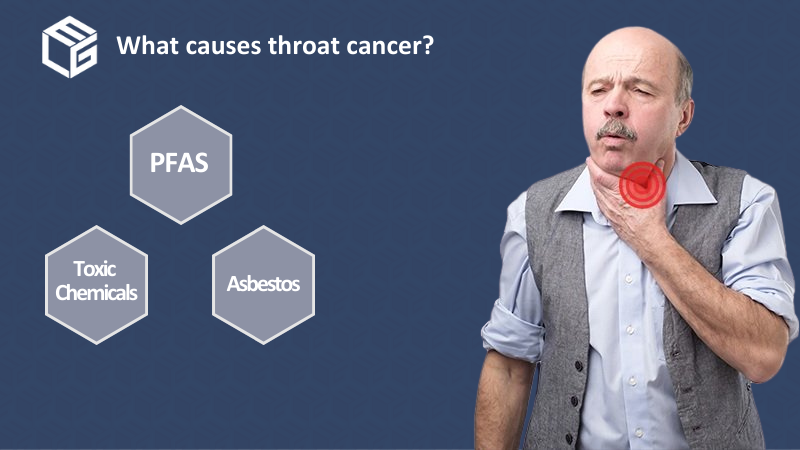Asbestos exposure increases the risk of developing throat cancer by 40%
Throat cancer was linked to asbestos exposure by the Institute of Medicine panel in 2006. The panel concluded that studies from the past suggest a causal relation between asbestos exposure and laryngeal cancer.
According to a study led by the National Institute of Health, the chances of developing laryngeal cancer increase with the amount of asbestos a person breathes in.
Moreover, people exposed to asbestos have a 40% higher risk of developing laryngeal cancer than those with no asbestos exposure. Individuals working in occupations such as mining, smelting, textile, and construction have a 2 to 3 times greater risk. Finally, people heavily exposed to asbestos were found to have a 157% higher risk of laryngeal cancer.
It is very important to note that smokers who have a history of asbestos exposure and were diagnosed with throat cancer may also be entitled to compensation, as it is typically asbestos that is the culprit behind the disease. The telltale sign that laryngeal or esophageal cancer is the consequence of asbestos exposure is the presence of asbestos fibers along the lining of the larynx or esophagus.
The following are the symptoms of throat cancer, as both laryngeal and esophageal cancer have many in common:
- a painless lump in the neck
- hoarseness
- facial pain
- a persistent dry cough
- ear pain
- wheezing
- hearing changes or tinnitus
- nasal congestion or bleeding
- a sore throat that does not go away
During the last century, asbestos exposure occurred between the 1920s and the 1980s on the job and in the military. Some of the occupational groups with a high risk of asbestos exposure were construction workers, textile mill workers, chemical workers, shipyard workers, insulators, electricians, mechanics, power plant workers, welders, and oil refinery workers. Eligible individuals will have their asbestos claims filed with the asbestos trust funds of the companies whose products they were exposed to. Veterans will also have a VA disability compensation claim filed in addition to the one filed with asbestos trust funds.
Misdiagnosis is a frequent occurrence among victims of asbestos exposure, which is why we encourage you to seek a second and even a third opinion from different medical specialists.
Secondary asbestos exposure can also result in throat cancer
Because asbestos companies went to unimaginable lengths to keep the dangers of exposure a secret from employees, industrial workers were not given protective equipment to wear on the job, and they were not required to change their clothes at the end of their shift either.
As a consequence, they would typically come home to their families covered in asbestos dust, which their loved ones would unavoidably inhale. While secondary asbestos exposure implies a lower risk of developing throat cancer, family members can receive this diagnosis, too.
Secondary asbestos exposure would occur when the wives of asbestos workers would shake out their clothes laden with asbestos dust before laundering them, when children would greet and hug their fathers upon returning home, and when asbestos fibers became embedded in furniture such as armchairs and couches. If you lived under the same roof as a former asbestos worker and suffer from laryngeal cancer or esophageal cancer, you should contact our attorneys, as you may also be eligible to file a claim with asbestos trust funds.
Recovering compensation for toxic exposure victims as surviving family members
Not rare are the cases when a toxic exposure victim struggling with a debilitating illness such as throat cancer refuses to seek financial compensation, either out of fear of a long, complex legal process or because they are in too much physical and emotional pain to navigate the legal process. Consequently, many toxic exposure victims pass away without having benefited from the money they would have deserved for their unjust suffering. However, in the regrettable situation that you lost a family member who had throat cancer due to toxic exposure and had not filed a claim, you can step in and obtain compensation on their behalf.
Our attorneys will assess your case to determine whether you are eligible to file a wrongful death claim for toxic exposure. If you are, they will start preparing the necessary documents for your claim. You will only need to send our legal team the employment or military records of your deceased family member, which you must retrieve, their medical records, and their death certificate. The rest will be efficiently taken care of by our skilled attorneys. Eventually, if our endeavors are successful, you may obtain a part of the compensation your loved one would have been eligible for.


